Seven incredible high-speed rail projects set to revolutionise travel
By Chris Leadbeater
If, by sleight of time-travel, you could show a modern railway to one of the Victorian-era pioneers who so steered the concept, they would surely shrink backwards into their stiff suits and stern expressions, astounded at the wonders before them. Trains whizzing past at more than 450km/h, a mere blur to the naked eye? Whoever heard of such a thing?
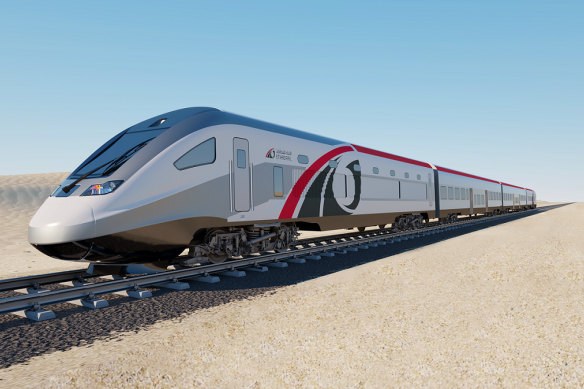
Etihad Rail in the UAE is one of a number of new high-speed railways under construction.
Alternatively, George Stephenson and Isambard Kingdom Brunel might take one look at the high-speed lines which increasingly cover parts of the planet, and nod in quiet approval – seeing their initial ideas brought to an ultimate, but wholly logical, conclusion.
In truth, the railway has always been a work in progress, adding velocity, distance and technology to its attributes as the decades have passed. The following projects – all under construction or discussion – are, for the most part, likely to add something substantial to the story in the next 10 or 20 years, making for journeys as enthralling to 21st century passengers as any theoretical 19th century time-travellers in the carriage alongside them.
Chūō Shinkansen (Japan)
Projected opening: 2034
Such is Japan’s affinity for railway engineering that its latest major project has broken records more than a decade before services are due to begin. The Chūō Shinkansen will use the advanced “maglev” technology (whereby trains are propelled by electromagnetic force, rather than rolled on wheels) already brought into service, most notably, in China. It is being built in two stages – an initial 286-kilometre line from Tokyo to Nagoya that should open within the next 10 years; and a 153-kilometre extension to Osaka that may arrive by 2037.

Japan’s Chūō Shinkansen will use the advanced “maglev” technology, which propels trains by electromagnetic force.Credit: AP
Whatever the exact completion dates, the results will be swift. A 43-kilometre stretch of the line, the Yamanashi Test Track, has been a crucial part of the development work. On April 21, 2015, it set a new fastest speed for manned rail transport, when a seven-carriage train was catapulted up to 600km/h. Passenger services will run at 500km/h, which will mean travel times of Tokyo to Nagoya in 40 minutes, and Tokyo to Osaka in 67 minutes.
North Bothnia Line (Sweden)
Projected opening: 2030
High-tech railways are not generally in keeping with the rustic image of Scandinavia’s loftier reaches, but Sweden has been smashing this particular stereotype for a while. The Bothnia Line – so-called because it runs alongside or close to the Gulf of the same name, which separates the vast country from neighbouring Finland – has been operational since 2010. It begins at Höga Kusten Airport, near the town of Kramfors, 480 kilometres north of Stockholm – and embarks on a 190-kilometre trip north-east, to Umeå. The track meets the loose definition of “high-speed rail” (200km/h-plus), with trains permitted to hit 250km/h.
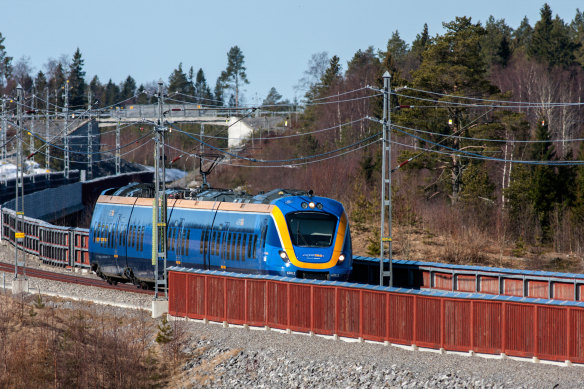
Sweden’s Bothnia Line has trains which travel up to 250km/h.Credit: Alamy
This, though, is not the end of the matter. Ground has already been broken on an upper spur – the North Bothnia Line – which will add another 274 kilometres of infrastructure, and take the track to Luleå, on the cusp of the Arctic Circle. That the project has been dogged by environmental concerns – progress on the original Bothnia Line was delayed by legal action over its route through a nature reserve on the Ume River – has cost the railway a few eco-points, but it has also served to emphasise the beauty of the landscape it dissects.
Etihad Rail (United Arab Emirates)
Projected opening: Passenger services unconfirmed
Given its propensity for conjuring skyscraper cities amid swirling sands, it was always likely that the UAE would turn its wealthy hands to a modern train network. In fact, it has been hard at work since 2009, hammering away at an “Etihad Rail” system that, once finished, will amount to 1200 kilometres of track, cutting through all seven Emirates – linking the port of Al Sila, near the Saudi border on the western edge of Abu Dhabi, with Fujairah on the Gulf of Oman. A proposed 305-kilometre branch into Oman – serving the Omani port of Sohar (via Abu Dhabi’s second city Al Ain) – will make the railway international.

Etihad Rail has been under construction since 2009.
The completed stretches of track are already repaying the investment: freight has been moving along the western sections since 2016. When passengers will come aboard is less clear. However, the design for the network’s bullet-train-style carriages has been unveiled by Spanish rolling-stock specialists Grupo CAF (the system will fall just short of “high-speed”, with passenger trains projected to run at 190km/h) – while a partnership with chic Italian hospitality company Arsenale suggests that journeys will be rather luxurious.
Lyon-Turin Railway (France, Italy)
Projected opening: 2032
Switzerland has long made a virtue of railways that snake over and around snowy corners of the Alps. France and Italy are currently bypassing such postcard scenery with a beast of a construction scheme that will cut straight through Europe’s greatest mountain range.
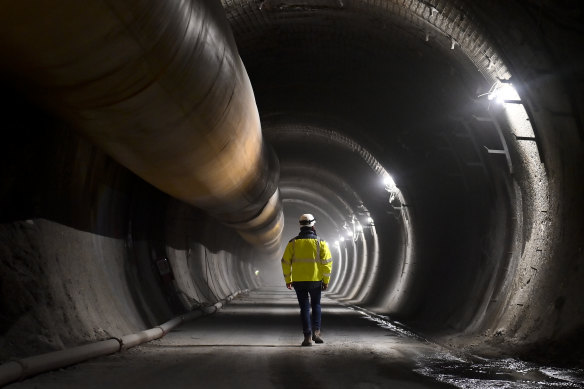
On the Lyon-Turin Railway, trains will race between the two cities in just one hour, 47 minutes. The line cuts through Europe’s greatest mountain range.Credit: Getty Images
The plan is simple in its ambition – a 270-kilometre line that will link France’s second city to the capital of Piedmont, connecting the French and Italian high-speed rail networks in the process. This will be achieved via the carving of the Mont Cenis Base Tunnel (also known as the Mont d’Ambin Base Tunnel) – a monster passageway (piercing the likes of Mont d’Ambin) which, at 57.5 kilometres, will be the planet’s longest railway tunnel (the Channel Tunnel, for the record, is a mere 50.4 kilometres).
The project is not universally loved. There have been protests on both sides of the border since it was announced in 1990, and its enormous cost (€25 billion/$40.5 billion) has raised regular hackles. Nonetheless, it will be fast. Trains will race between Lyon and Turin in one hour, 47 minutes, at up to 225km/h, more than halving the present (rail) journey time.
Brightline West (USA)
Projected opening: 2028
The American railway has tumbled away from the boom era of the 19th century, lines spreading west as a new nation expanded rapidly. But the past few years have seen a quiet renaissance come trundling into view. The Brightline service was launched in Florida in September last year, linking Orlando and Miami over 378 kilometres of fresh track.
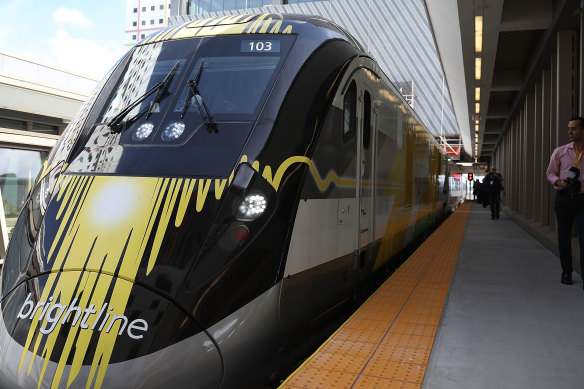
The new Brightline West will connect Las Vegas to Los Angeles.Credit: Getty Images
Brightline West will perform the same trick on the far side of the country, providing a 350-kilometre connection between Las Vegas to the outer edges of Los Angeles – and trains at 300km/h. The schedule is optimistic. Everything is due to be finished in time for the LA Olympics in 2028.
TAV (Brazil)
Projected opening: 2032
One of the more eye-catching proposals on the rail drawing-board is the blueprint for a high-speed link between Brazil’s two biggest cities. This would be a 400-kilometre line between Sao Paulo and Rio de Janeiro. It would radically alter economic fortunes along a central portion of the nation’s Atlantic oceanfront, shrinking what is currently a seven-hour slog by coach or car into an 85-minute dash – locomotives racing at 350km/h.
Brazil’s current rail system is generally regarded as expensive and inefficient by locals.
Will the TAV (Trem de Alta Velocidade) become a reality? First mooted in 2007, the TAV was due to be ready for the 2014 FIFA World Cup, then for the 2016 (Rio) Olympics. COVID-19 added another delay – and now the deadline is 12 years away. This service is running late.
Second Chengdu-Chongqing High-Speed Railway (China)
Projected opening: 2027
If the railway was largely a product of the Industrial Revolution in Britain, its modern spiritual home is probably in China, where rapid new lines are sliced into the countryside at a breathtaking rate. The Second Chengdu-Chongqing High-Speed Railway is a mildly confusing case in point.
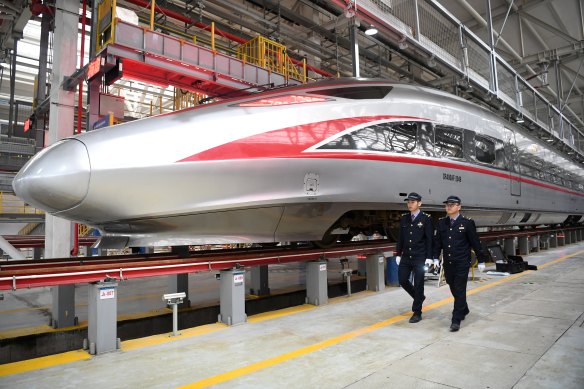
High-speed trains between Chongqing and Chengu will hit more than 400km/h.Credit: Getty Images
In spite of its name, this will be the third direct link between the two southerly cities, superseding both the 1952 original and the existing high-speed line, which opened only in 2015. The latest iteration will knock 16 kilometres off the route (291 kilometres), and with trains reaching 400km/h, it will offer the journey in 50 minutes.
Hokkaido-Sakhalin (Japan, Russia)
Projected opening: N/A
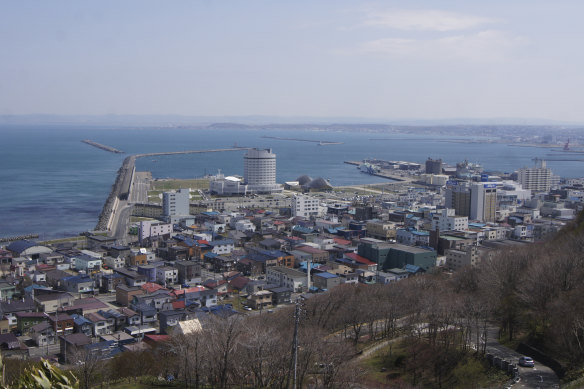
Wakkanai, Japan, overlooking the Soya Strait.Credit: Getty Images
A rail link between Japan and Russia might sound like pie-in-the-sky thinking, but the concept is not entirely outlandish. The Sōya Strait, which separates Japan’s northernmost island, Hokkaido, from its Russian neighbour Sakhalin, is only 45 kilometres wide, well within the scope of 21st century technology.
A bridge or tunnel between the two islands has been discussed, by both governments, since the turn of the millennium; Russian President Vladimir Putin commissioned a feasibility study as recently as 2018. Russia’s descent to pariah status in 2022 has killed any chance of immediate progress – but the idea will continue to simmer.
The Telegraph, London
Sign up for the Traveller newsletter
The latest travel news, tips and inspiration delivered to your inbox. Sign up now.